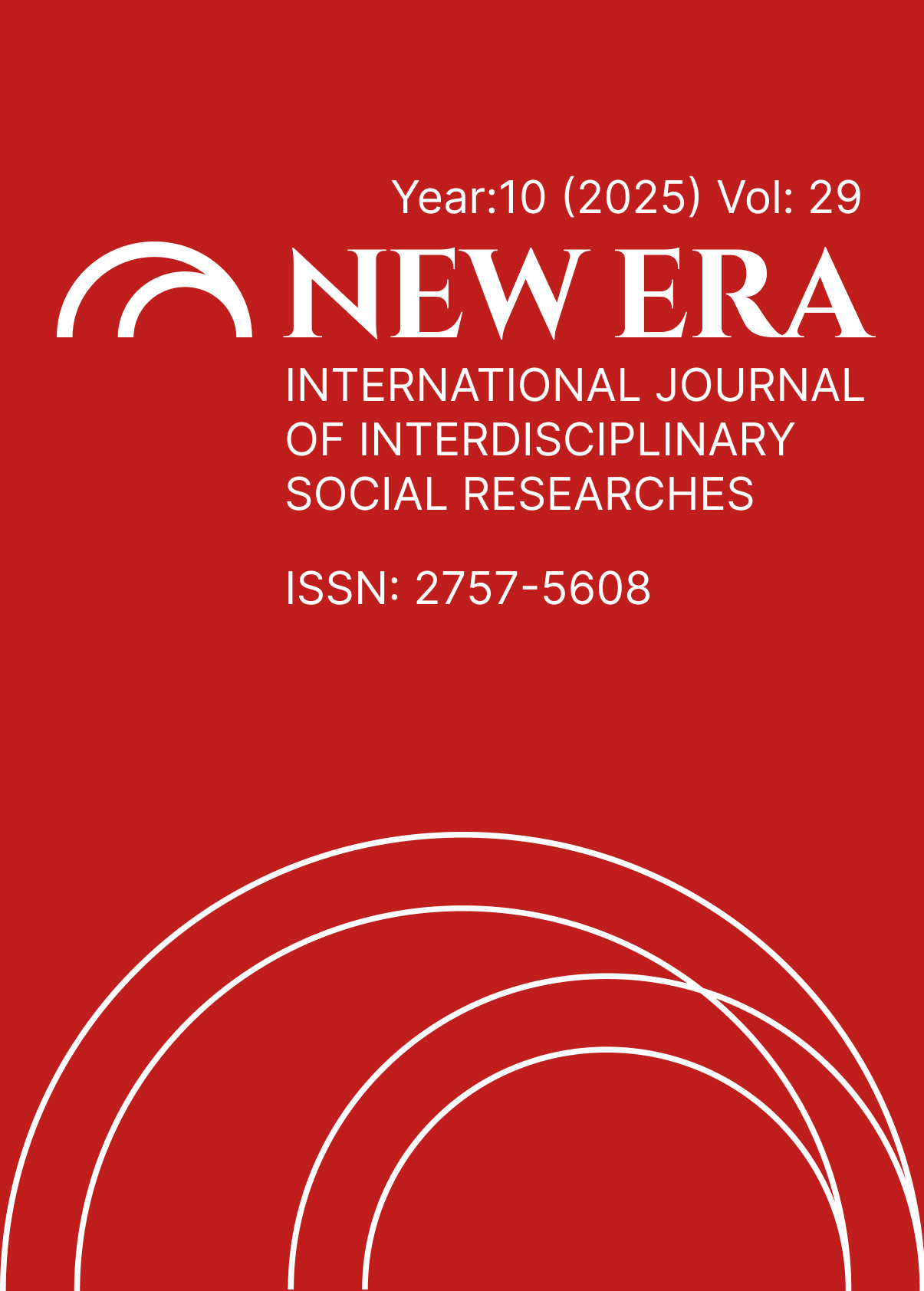THE ROLE OF SOCIAL MEDIA IN THE SPREAD OF POLITICAL AND ETHNIC HATE SPEECH IN İVORY COAST: THE EXAMPLE OF TIKTOK
DOI:
https://doi.org/10.5281/zenodo.15736896Keywords:
Media and Communication studies, hate speech Freedom of speech, Social MediaAbstract
With the widespread use of the Internet, social media platforms are playing an active role in social relations, with an increasing number of users and content being shared. These platforms have created a new model of social relations in almost all societies and have led to significant transformations in the qualities of traditional communication processes. However, while social media has paved the way for humanity by facilitating communication, they have also brought with them negative aspects and abuses such as hateful and xenophobic comments, cyberbullying, copyright infringement and the endangerment of privacy through the sharing of personal data. In societies like İvory Coast, which have not yet completed the process of democratic development, this can play a role in deepening political and ethnic divisions. This study analyses the role of social media in the dissemination of political and ethnic hate speech in İvory Coast. TikTok is used as an example of a platform. TikTok is one of the most popular and effective social media platforms in Côte d'Ivoire. For this purpose, a sample of 352 posts containing hate speech shared between August and December 2024 was selected and content analyses were performed using MAXQDA software. The results show that TikTok has played a role in the popularizing of political and ethnic hate speech in İvory Coast.
References
Ahougnon, S. (2023). En Afrique subsaharienne, TikTok dépasse Instagram et X pour devenir le 2e réseau social le plus utilisé après Facebook (GeoPoll), https://www.agenceecofin.com/reseaux-sociaux/2509-112071-en-afrique-subsaharienne-tiktok-depasse-instagram-et-x-pour-devenir-le-2e-reseau-social-le-plus-utilise-apres-facebook-geopoll, Erişim tarihi: 25.09.2023.
Bilge, R. (2016). Sosyal Medyada Nefret Söyleminin İnşası ve Nefret Suçlarına İlişkin Yasal Düzenlemeler: Yeni Medya, (1), 1-14. https://dergipark.org.tr/tr/pub/yenimedya/issue/55557/760546, Erişim tarihi: 01.09.2016
Cengiz, İ.F. (2024). ‘Theoretical Justifications of the Right to Free Speech in the Digital Era’, Liberal Düşünce Dergisi, (114), 139-154. https://doi.org/10.36484/liberal.1308457, erişim tarihi 22.06.2024
Chen, T. (2021). The Influence of Hate Speech on TikTok on Chinese College Students, USF Tampa Graduate Theses and Dissertations. https://digitalcommons.usf.edu/etd/8747, Erişim tarihi : 01.03.2021.
Conseil, F. (2023). Discours de haine. La loi présente-t-elle des lacunes? Rapport du conseil federal en réponse au postulat 21.3450 de la commission de la politique de securité du conseil des Etats du 25 Mars 2021. https://www.parlament.ch/centers/eparl/curia/2021/20213450/Bericht%20BR%20F.pdf, Erişim tahiri:16.11.2023.
Çelen, Ö. Türk Ceza Kanunu’nda Nefret Saiki ile İşlenen Suçlar, TİHEK (Türkiye İnsan Hakları ve Eşitlik Kurumu Nefret Söylemi ve Nefret Suçları Sempozyumu Bildiriler Kitabı, Editör: Muhterem Dilbirliği, Ankara, s. 82-95.
Çelik, E. (2016). Nefret Söylemi, İfade Özgürlüğünün Neresinde? İnönü Üniversitesi Hukuk Fakültesi Dergisi, 4(2), 205-240. https://doi.org/10.21492/inuhfd.239845, erişim tarihi 13.07.2016.
Dalkılıç, M. M. (2021). Nefret Söylemi ve İfade Özgürlüğü Tartışmaları Çerçevesinde İslamofobya: L'Express Dergisi Örneği: Medya ve Din Araştırmaları Dergisi, 1 (1), 89-109. https://dergipark.org.tr/tr/download/article-file/496944, erişim tarihi: 08.05.2018.
Demirbaş, T. (2017). Nefret Söylemi ve Nefret Suçları: Dokuz Eylul Üniversitesi Hukuk Fakültesi Dergisi, 19(3), 2693-2701. https://hukuk.deu.edu.tr/wp-content/uploads/2017/11/3-TIMUR-DEMIRBAS.pdf, erişim tarihi: 3.11.2017
Donguy, L. A. (2024). Tiktok, l’influence de l’application et des réseaux sociaux sur l’industrie de la Musique. To cite this version : HAL İd : dumas-04521270. https://dumas.ccsd.cnrs.fr/dumas-04521270v1, erişim tarihi: 04.10.2024
Furnémont, J. F. (2018). Lutter Contre le Discours de Haine Dans les Medais Audiovisuels, Normes, jurisprudence, bonnes pratiques et études de cas, Organisation internationale de la Francophonie. https://www.refram.org/Actualites/Actualites-de-la-regulation/L-Organisation-internationale-de-la-Francophonie-publie-un-guide-contre-les-discours-de-haine, erişim tarihi: 26.09.2018.
Gül, A. (2023). Açış Konuşmaları, TİHEK (Türkiye İnsan Hakları ve Eşitlik Kurumu Nefret Söylemi ve Nefret Suçları Sempozyumu Bildiriler Kitabı, Editör: Muhterem Dilbirliği, Ankara, s. 14-19, https://www.tihek.gov.tr/public/editor/uploads/1662712481.pdf, erişim tarihi: 27.10.2023
İsmanov, A. vd., (2023). #Hatespeech, From Hatespeech to Non-Violent Communication. Prevention Media, Association of Communicators with The Support of UNDP in the Kyrgyz Republic: ISBN: 978-9967-35. S. 120. https://www.undp.org/kyrgyzstan/publications/hate-speech-non-violent-communication, erişim tarihi: 14.06. 2023
Karaman, O. (2023). İnfluencer Marketing on YouTube: A Quaalitative Analysis With MAXQDA: Journal of Business Administration and Social Studies, 7(2), 123-132. https://j-ba-socstud.org/en/influencer-marketing-on-youtube-a-qualitative-analysis-with-maxqda-16196, erişim tarihi: 25.09. 2023
Kouamé, C. (2022). Les Jeunes Comme Moteurs de Prevention des Discours de Haine et Des Conflits Socio-politiques et Communautaires : United Nations Peacebuilding, Rapport final. https://www.un.org/peacebuilding/content/pbfcivd1-les-jeunes-comme-moteurs-de-prevention-des-discours-de-haine, erişim tarihi: 25.09.2022
Köseoğlu, A. (2023). Tiktok’ta Mahremiyet Algısının Dönüşümü: İnönü Üniversitesi İletişim Fakültesi Elektronik Dergisi (İNİF E-Dergi), 8(1), 172-188. https://dergipark.org.tr/tr/pub/inifedergi/issue/77799/1150606, erişim tarihi: 31.05.2023
Mouketou, D. (2021). La lutte contre les Contenus haineux sur les platformes de medias sociaux: une analyse comparative d’approches de régulation : Centre d’étude sur l’intégration et la mondialisation. https://ceim.uqam.ca/db/IMG/pdf/la_lutte_contre_les_contenus_haineux.pdf, erişim tarihi: 09.07.2021
Pusa, T. (2024). İfade Özgürlüğü ve Sosyal MEdya: İstanbul Medipol Üniversitesi. https://www.researchgate.net/publication/384328827_IFADE_OZGURLUGU_VE_SOSYAL_MEDYA, erişim tarihi: 25.09.2024
Vardal, Z. B. (2015). Nefret Söylemi ve Yeni Medya. Maltepe Üniversitesi İletişim Fakültesi Dergisi, (1), 132-156. https://dergipark.org.tr/tr/pub/iled/issue/18466/194416, erişim tarihi 03 Hazıran 2016.
Downloads
Published
How to Cite
Issue
Section
License
Copyright (c) 2025 NEW ERA INTERNATIONAL JOURNAL OF INTERDISCIPLINARY SOCIAL RESEARCHES

This work is licensed under a Creative Commons Attribution-NonCommercial 4.0 International License.


